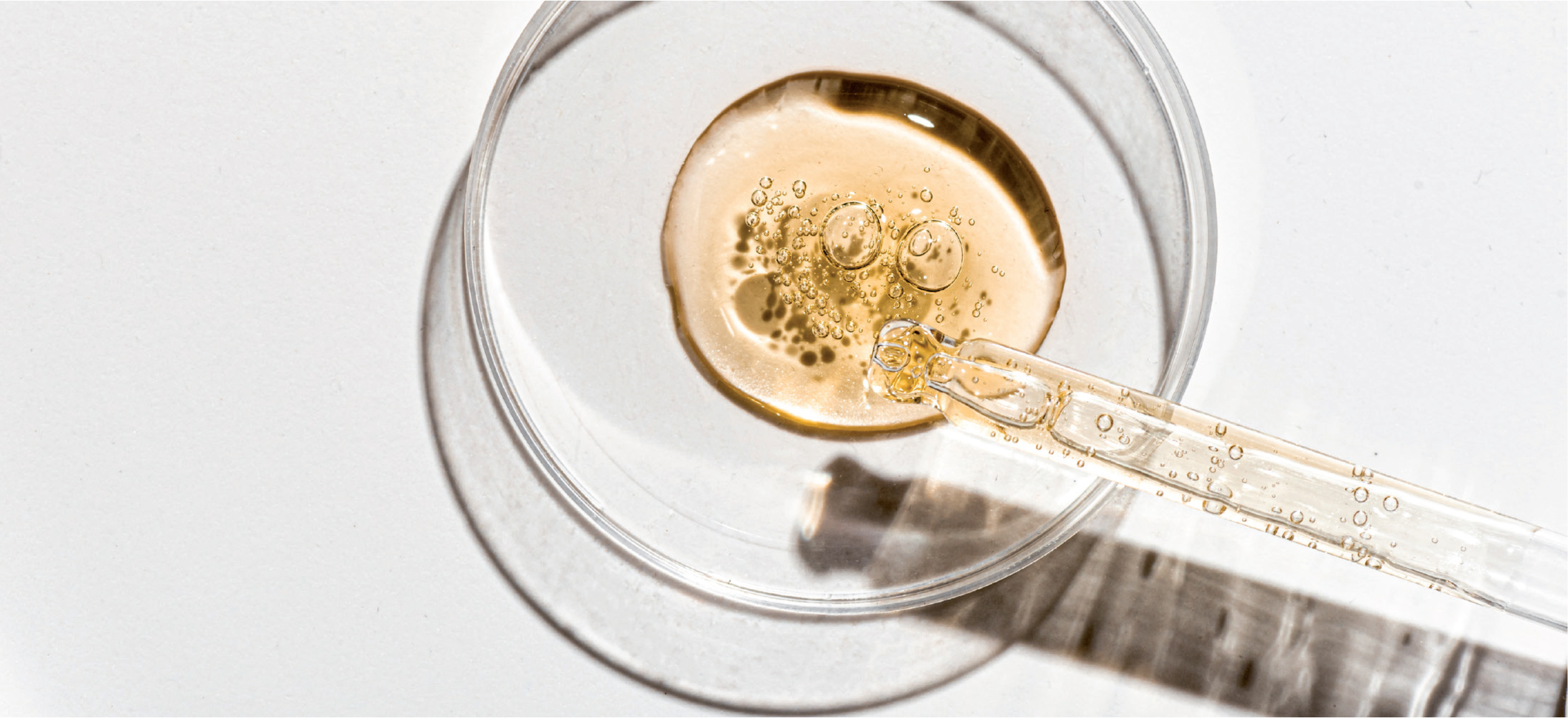
A powerhouse ingredient, considered by many to be the gold standard of skincare, vitamin C is a versatile, water-soluble vitamin that's naturally found in fruits and vegetables like oranges, strawberries, kiwi, bell peppers, and leafy greens (National Institute of Health, 2025). It is the most abundant antioxidant present in human skin (Manela-Azulay and Bagatin, 2009).
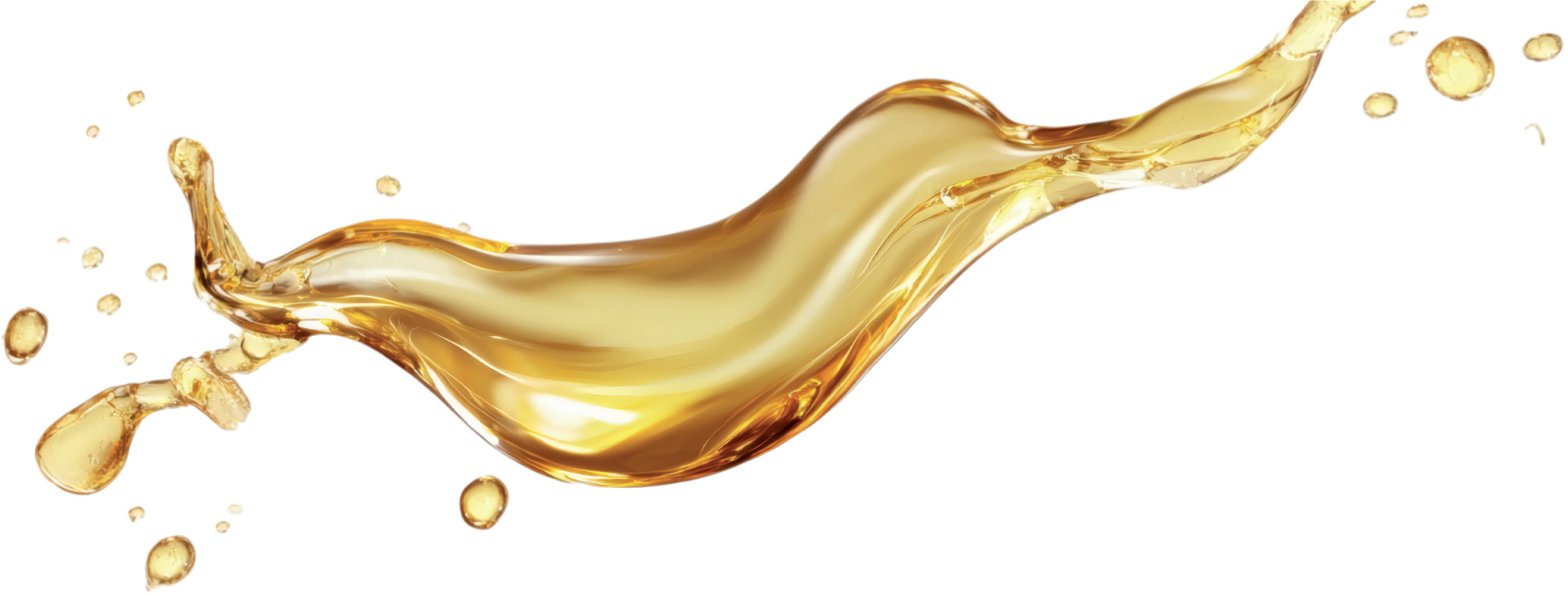
Renowned for its broad-spectrum of health and dermatological benefits, L-ascorbic acid (LAA), is the most bioactive and well-studied form of vitamin C (Farris, 2009; Al-Niaimi et al, 2017). L-ascorbic acid's potency makes it the preferred form of vitamin C for most dermatological and skincare products. It is widely used in various topical formulations, including serums, gels, creams and lotions. The choice of formulation depends on skin type, desired penetration depth, and stability requirements.
Benefits to the skin
L-Ascorbic Acid (LAA) has several, well documented skin benefits. It is commonly applied for the maintenance and treatment of photoaging (Chen et al, 2012; Farris, 2012) hyperpigmentation (PIH) (Hwang et al, 2009), and acne scars (Hujoel and Hujoel, 2022). Higher concentrations and stabilised formulations are frequently recommended by dermatologists in combination with sunscreen and other active ingredients to maximise efficacy and protection against oxidative stress.
Products containing LAA are commonly available without a prescription and can be incorporated into daily skincare routines to enhance skin brightness, collagen production, as well as overall skin health.
Meet the author
Cigdem Kemal Yilmaz is a chemical engineer, skincare formulator, skincare science educator and founder of Skin Masterclass. She graduated with a master's degree in chemical engineering from the University of Bath and created a CPD-certified skincare education and consultation platform Skin Masterclass for skin professionals looking to upskill their knowledge and scale their skincare consultation business.
Mechanisms of action
The efficacy of vitamin C is attributed to its potent antioxidant capabilities, allowing it to neutralize reactive oxygen species (ROS) that generate free radicals within the skin. Unchecked free radicals contribute to collagen degradation, oxidative stress, and melanocyte hyperactivity, all of which accelerate skin aging and pigmentation disorders. Vitamin C exerts its action through several key mechanisms:
Inhibition of tyrosinase activity
LAA interacts with copper ions at tyrosinase active sites, directly inhibiting tyrosinase, the rate-limiting enzyme in melanogenesis. This leads to a reduction in melanin synthesis, making it a crucial agent for hyperpigmentation treatment (Ando et al, 2007). One clinical study examining the effect of a topical formulation containing 25% ascorbic acid and a chemical penetration enhancer reported a significant decrease in pigmentation caused by melasma after 16 weeks (Hwang et al, 2009).
Prevention of lipid peroxidation
LAA plays a role in mitigating lipid peroxidation, which can trigger inflammatory pathways and worsen pigmentation (Krajcovicová-Kudlácková et al, 2004).
Reduction of perifollicular pigment
LAA has been shown to modulate perifollicular pigmentation, a common presentation in photoaging and melasma, by regulating pigment distribution within the epidermis. It's uniquely positioned as a multifunctional agent, addressing both pigmentary concerns and structural skin integrity.
For example:
Hyperpigmentation treatments
By inhibiting melanogenesis, Vitamin C reduces dark spots, melasma, and post inflammatory hyperpigmentation (PIH). It enhances skin luminosity and evenness by modulating melanosome distribution (Sanadi and Deshmukh, 2020). One review article (De Dormael et al, 2019) evaluated 31 clinical studies examining L-ascorbic acid in pigmentation disorders. The evaluation focused on assessing the quality and efficacy of these studies to conclude the necessary strength of vitamin C required for optimal results. Vitamin C demonstrated mild-to-moderate efficacy at 2-3%. Stronger effects were observed at 5-10%, with 10% showing the most significant results.
Collagen synthesis and anti-aging benefits
Vitamin C stimulates fibroblast activity, promoting collagen synthesis and strengthening the dermal extracellular matrix. It stabilises collagen fibres and reduces degradation by inhibiting matrix metalloproteinases (MMPs), which break down collagen (Bernard et al, 1998). In vitro studies demonstrate that vitamin C inhibits elastin biosynthesis in fibroblasts, reducing the likelihood of solar elastosis caused by chronic UV exposure (Farris, 2005).
Optimal concentration
Research suggests that LAA requires a minimum concentration of 8% to exert significant biological effects (Ravetti et al, 2019). However, concentrations above 20% do not enhance efficacy and may increase the risk of skin irritation (Pinnell et al, 2001). Therefore, formulations typically contain LAA in the 10%-20% range to ensure optimal efficacy and outcomes.
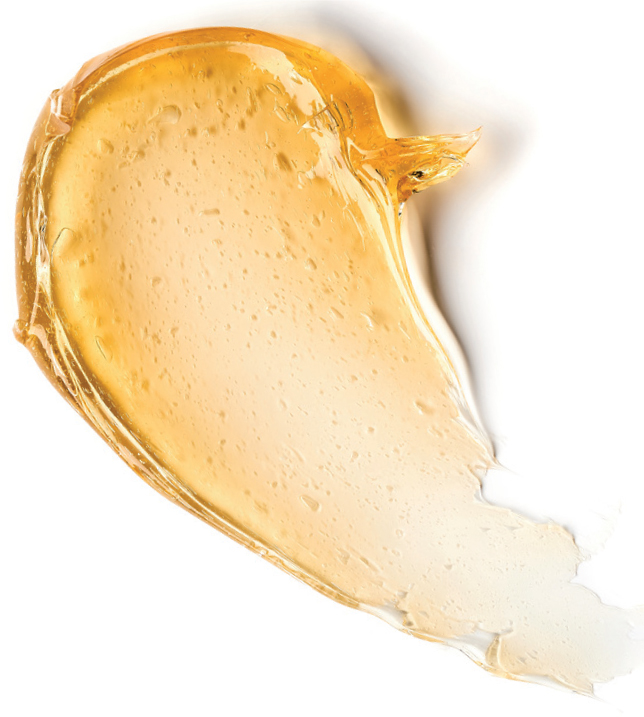
Stability considerations
LAA is inherently unstable and prone to oxidation when exposed to air, light, or heat, leading to a loss of efficacy. Ravetti et al (2019) explained that while LAA is the most prevalent vitamin C ingredient in skincare and represents the purest form of vitamin C, its instability arises from its susceptibility to oxidation. This hydrophilic, or water-soluble compound, exhibits reduced effectiveness in topical application (poor penetration) due to the skin's anatomical characteristics. The stratum corneum, the epidermis's top layer of cells, is a hydrophobic, or lipid-loving, layer that facilitates the penetration of fat-soluble ingredients. Critical to the efficacy of topical ascorbic acid is the pH of the final formula. For optimal stability and permeability, the ideal pH for a vitamin C serum should be below 3.5. This is primarily attributed to the transformation from the charged to the uncharged form of the molecule. One brand offers an example of a currently available L-ascorbic acid product, containing 1% ferulic acid and 0.5% vitamin E. These additions contribute to both stabilising the molecule and achieving a pH below 3.5.
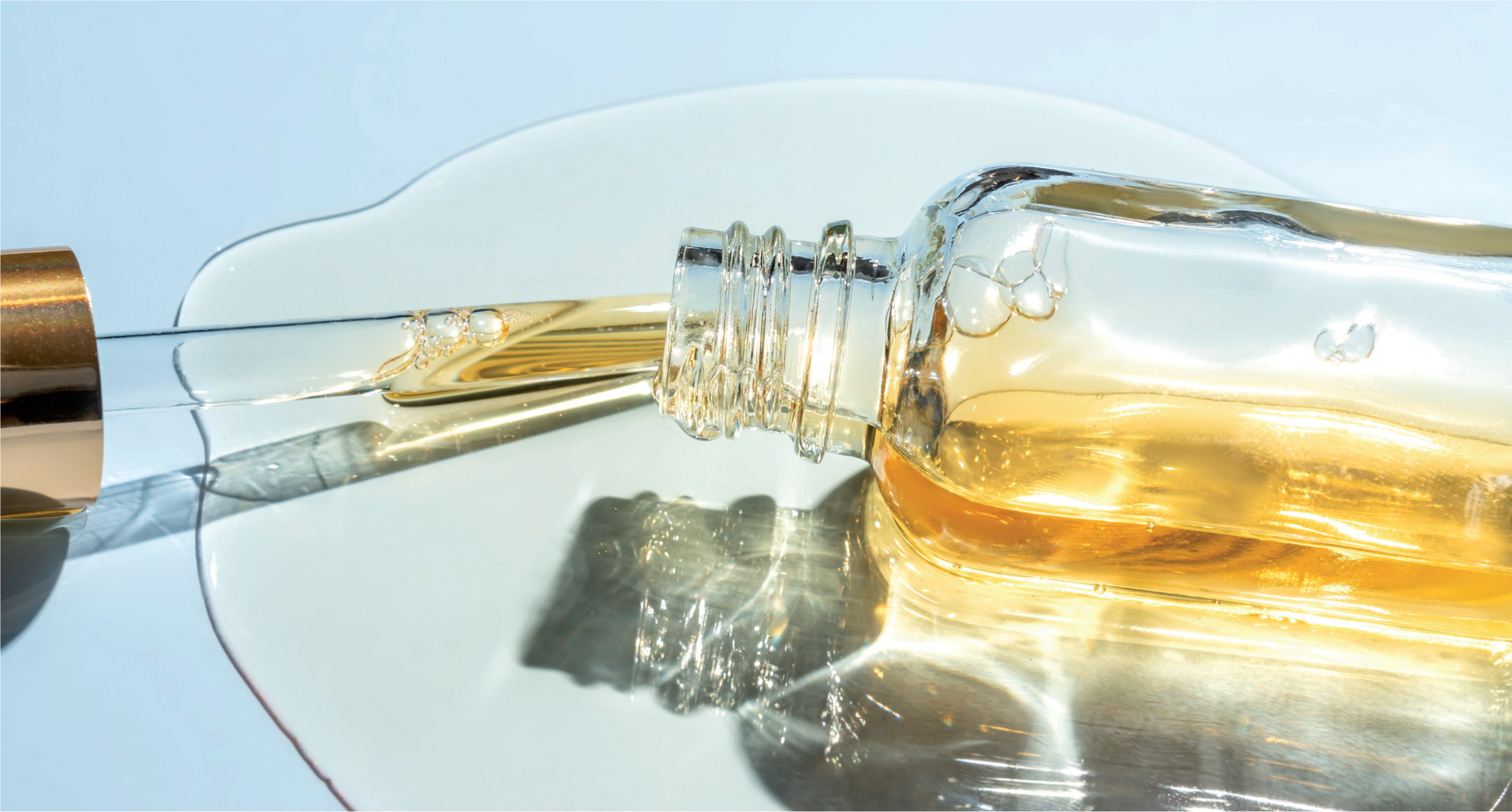
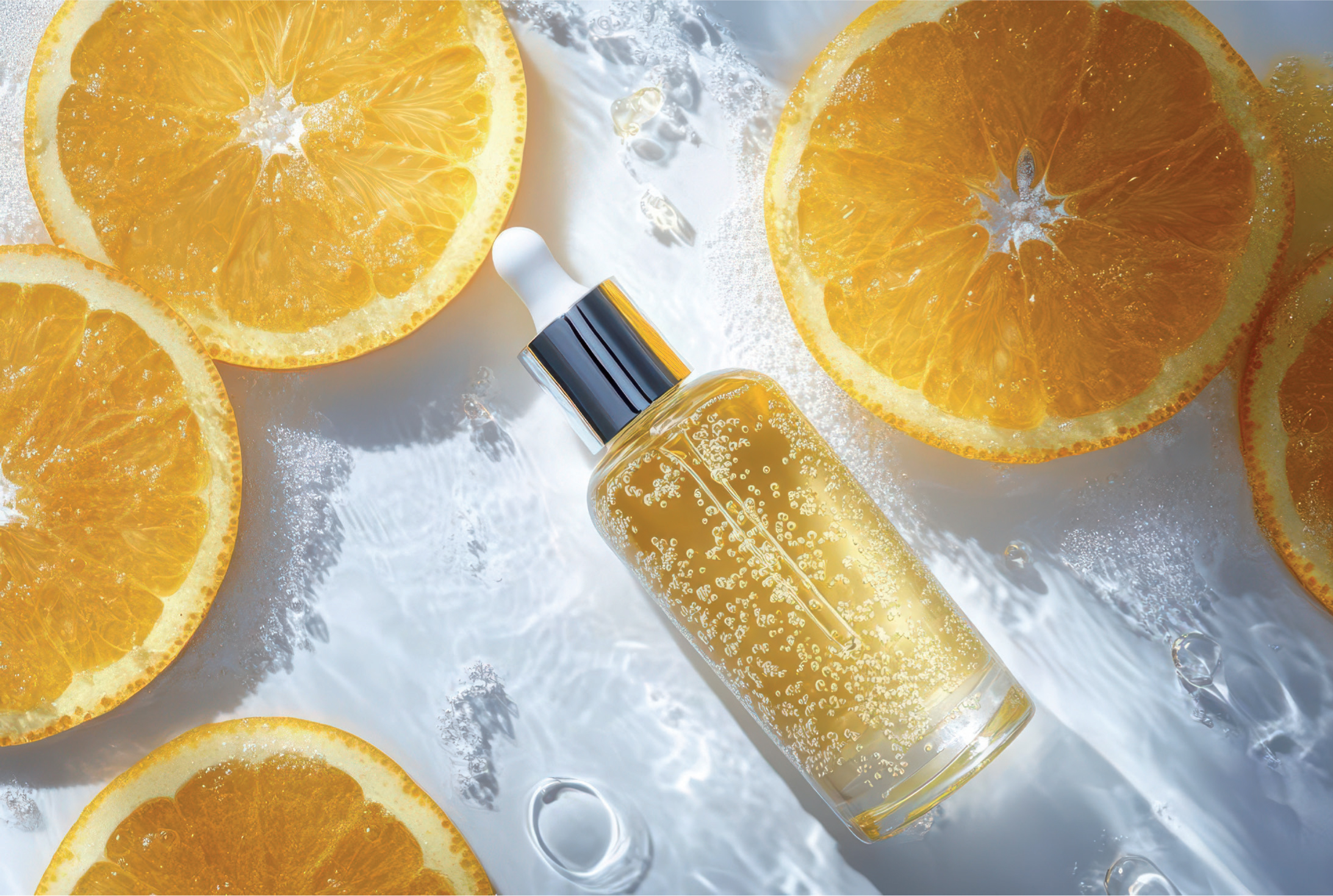
This instability presents challenges in developing effective topical formulations. To improve the stability and potency of LAA in topical formulations, several strategies have been employed:
- pH optimisation: formulating LAA at an acidic pH below 4 enhances skin absorption and stability (Lee et al, 2004; Lukić et al, 2021)
- Use of stabilising agents: incorporating antioxidants such as vitamin E (tocopherol) and ferulic acid has been shown to stabilise LAA and enhance its photoprotective effects (Ravetti et al, 2019).
- Microencapsulation: encapsulating LAA within carriers like gelatine and pectin microcapsules can protect it from environmental factors, thereby improving thermal stability and reducing oxidation (Talita et al, 2013).
- Anhydrous formulations: developing water-free formulations minimises LAA degradation, as the absence of water reduces the rate of oxidation (Kouassi et al, 2022).
- Airless packaging: utilising air-restrictive packaging, such as dark or tinted glass bottles with airless delivery systems, protects LAA from light and air exposure, thereby preserving its stability.
- Stabilised derivatives: vitamin C forms such as THD ascorbate, magnesium ascorbyl phosphate (MAP), and sodium ascorbyl phosphate provide greater stability and compatibility.
By implementing these formulation strategies, the stability and efficacy of LAA in topical applications can be significantly enhanced, making it a valuable component in dermatological treatments.
Ingredient layering
Proper layering of vitamin C in skincare is essential for maximising its efficacy in pigmentation correction, collagen stimulation, and photoaging prevention. Depending on the formulation and type of vitamin C, whether pure or derivative, layering can vary. If the product contains stabilised vitamin C through a delivery system with a balanced percentage, it can be layered with most ingredients, excluding certain actives that may reduce efficacy or increase irritation risks. However, if the product is a low pH, pure vitamin C with a high concentration, it is best used as a standalone treatment in the morning before applying sunscreen to enhance protection against UV radiation.
If using pure LAA at a low pH (<4.0) and high concentration (10-20%), it is best applied in the morning on clean, dry skin. Follow immediately with broad-spectrum SPF 30+ sunscreen to enhance UV protection and prevent oxidative degradation.
Ideal layering combinations for stabilised vitamin C formulations:
- Vitamin C + vitamin E (tocopherol) + ferulic acid → boosts stability and photoprotection (Ideal: 15% LAA + 1% vitamin E + 0.5% ferulic acid).
- Vitamin C + niacinamide (4-5%) supports skin barrier and reduces hyperpigmentation (best layered with stabilised derivatives like MAP or SAP).
- Vitamin C + hyaluronic acid (1-2%) enhances hydration and skin penetration (Ideal for sensitive skin types).
- Vitamin C + sunscreen maximises antioxidant and photoprotective effects.
Conclusion
L-Ascorbic acid provides an effective and tolerable option for patients and healthcare professionals when treating indications such as pigmentation issues, acne scarring, photo-damage and issues related to ageing with effective outcomes. Proper consideration should be given to potential stability issues, combined with the most effective layering techniques for optimal patient outcomes.
